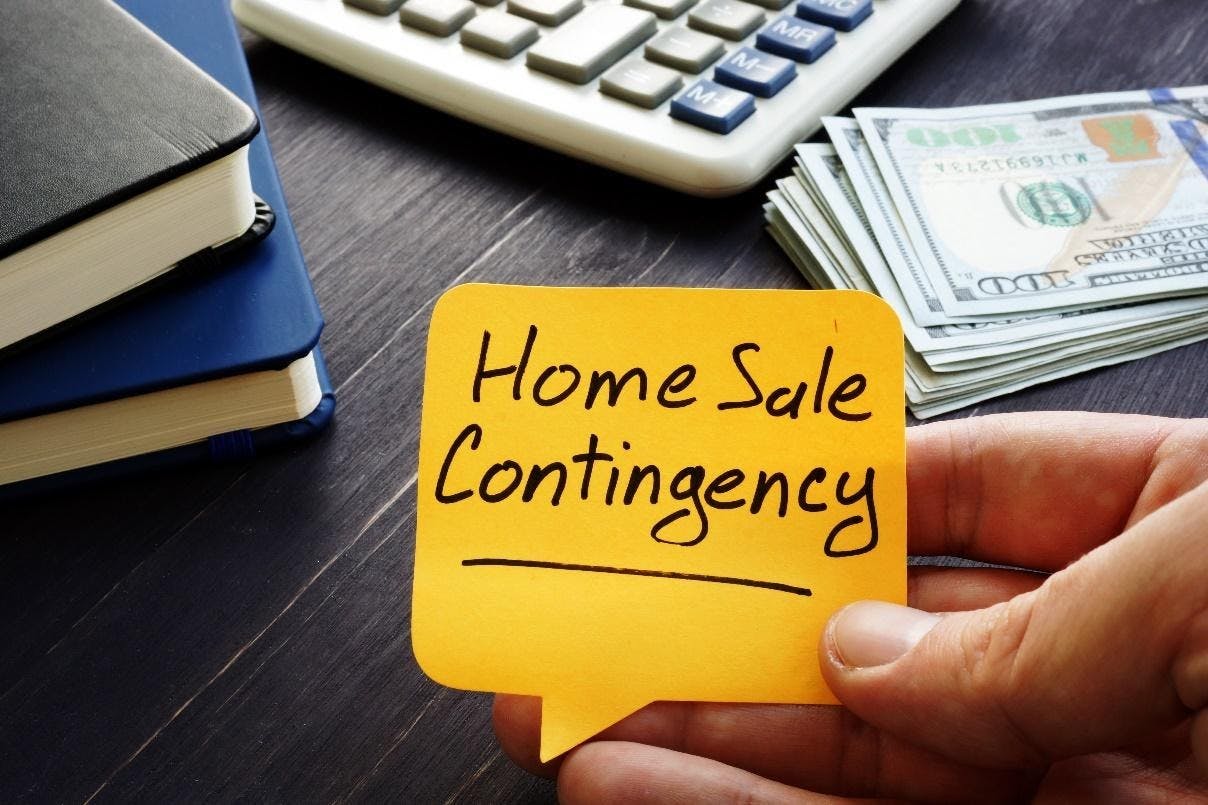Buyers find the ideal home and want to make an offer but there’s a potential roadblock: To pay for the new property they need funds from their existing home sale to make it work. Welcome to the complex world of a home-sale contingency.
Making a sale of the current home conditional for the purchase of a new home is common in residential real estate. It’s usually seen in a housing market when sellers outnumber buyers (just the opposite in most of our area right now).
Most contingencies are inherently favorable to buyers; they are an escape clause when the condition fails. In this circumstance, the buyer is asking seller to complete the purchase subject to the buyer’s acceptance of an offer to buy his/her existing home. Sellers are putting a great amount of trust in buyers (who they probably do not know) to market the home quickly and effectively and complete both deals.
When using this contingency, both the seller and buyer must agree to a timeline to satisfy the addendum. The default period is 45 days – that’s 45 days for the buyer to reach mutual acceptance of his/her home and inform the seller. (It’s not 45 days to complete both transactions.) The seller usually prefers a shorter time period to limit exposure to a potential failed deal, while buyers typically want as much time as possible to find a new owner for their home.
When using the home-sale contingency addendum, buyers are required to list their home for sale with the Northwest MLS within 5 days from the date of mutual acceptance on the new home. (If purchasing a home with the help of a lender, buyers also typically have 5 days from mutual acceptance to apply for the mortgage.) A different contingency addendum is available for a buyer whose home is already listed as “Pending” (mutual acceptance) – which offers far more certainty to a seller seeking to avoid being held “hostage” over the potentially protracted sale of the two homes.
Sharp listing agents (representing the original seller) should research the buyer’s home to ensure it is marketed well and priced to sell. Agents, including myself, would typically conduct a price analysis of similarly sold homes in the area and, before entering into this home contingency, request the buyers list their home at an amount that is competitive and saleable within 30 days.
It’s also possible to see multiple home-sale contingent offers linked to one another, whereby several buyers and sellers are affected by additional transactions – only, first, with permission of the sellers from the beginning of the chain. This could stretch out the string of home transactions for many months…but let’s not go there!
In a typical home-sale-contingency scenario, a buyer for the second home is found within a month or so. Great news! This allows buyers of the initial home to complete their transaction – in Washington, 3 days after closing their own home sale. It’s important to note, the original sellers must approve the buyers’ sale if that closing is less than 30 days or more than 60 and buyers must get that approval before entering in this new agreement or run the risk of losing the home sale (by being in default) and their earnest money if sellers wish to seek recourse.
If closing on the buyers’ home fails by no fault to them, the purchase agreement terminates and earnest money is returned to those disappointed buyers – unless the buyers waive the addendum (which waives all other contingencies in the agreement!) and complete the purchase within 30 days after the date of waiver. Waiving the addendum is a huge risk but sometimes takes place when buyers find different financing or they wish to roll the dice in hopes of completing the sale before signing day on their purchase. A miscalculation could mean the loss of buyers’ earnest money and possible legal action from the sellers.
Throughout the contingency period, the original sellers continue to list the home for sale. However, the listing will typically be shown as “Contingent” and not “Active” (For Sale) on real estate sites, lessening the chances of attracting additional interest.
In addition, the addendum allows the original sellers to accept an offer from a second buyer. When this happens, the sellers notify the first buyers – giving them typically 5 days to respond – requesting they complete the offer (whether or not their home has a confirmed buyer) or face being “bumped’ in favor of the new buyer.
There is always the chance that the bump notice will backfire. For example, upon reviewing the Seller Disclosure Statement, the second buyer determines there is too much work to fix the home and backs out. Suddenly, the seller could go from two buyers to none. Many sellers, however, avoid this potential nightmare by allowing the initial buyer to remain in first position until and unless the second buyer has agreed to certain terms, such as waiving inspection or other contingencies before committing to that new buyer.
Funding the purchase in this buy-and-sell scenario can sometimes be remedied without a home-contingency addendum by seeking a swing loan (or bridge loan or transition loan) that provides buyers with an additional layer of financing to purchase the new home without relying on the immediate sale of their property. Depending on the financial institution (and whether they have the stomach for this loan option amid this year’s uncertainty), borrowers typically must have at least 20% equity in the existing home, a down payment of at least 20% on the acquiring property and agree to list their home within a period of 60-90 days. Buyers should consult different mortgage lenders about loan options.
As you can see, this is a complex topic – arguably the most complicated in residential real estate – and should be handled intelligently with real estate professionals who know what they are doing.




